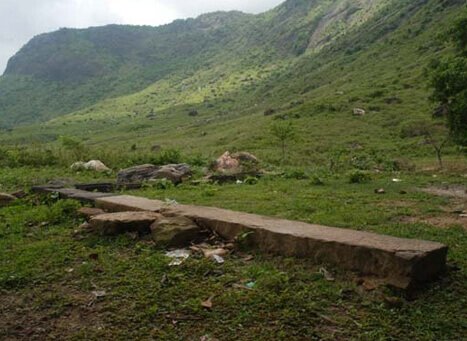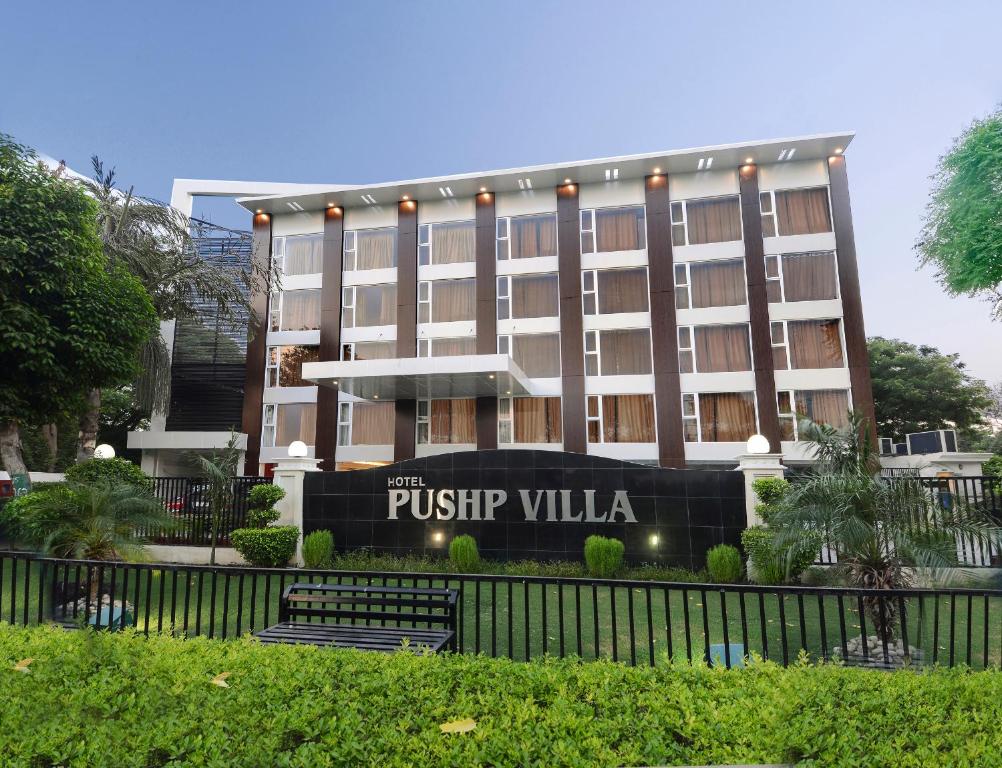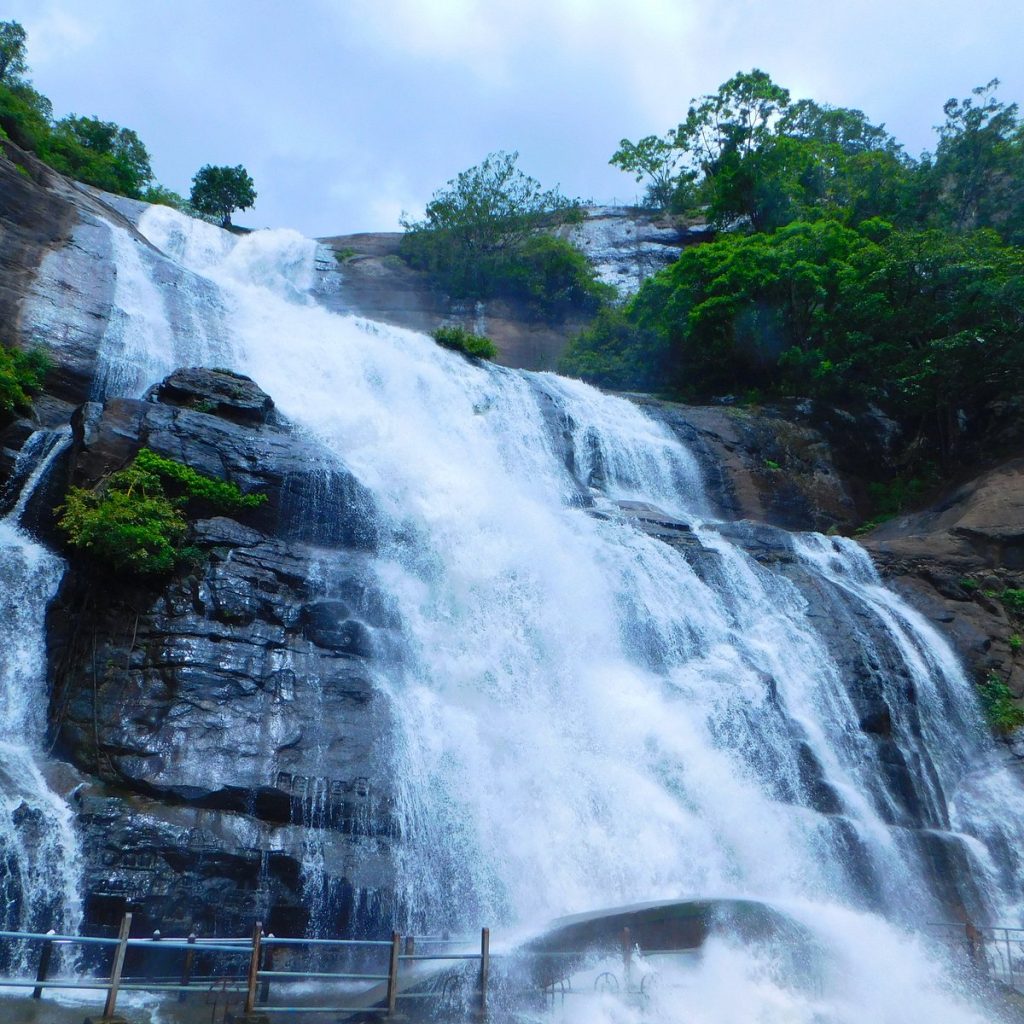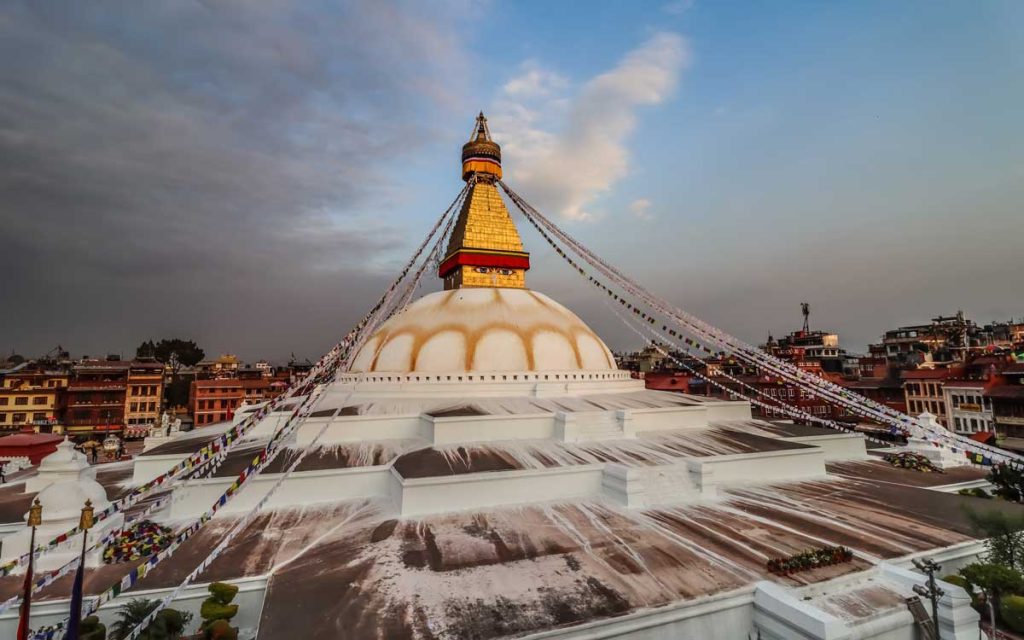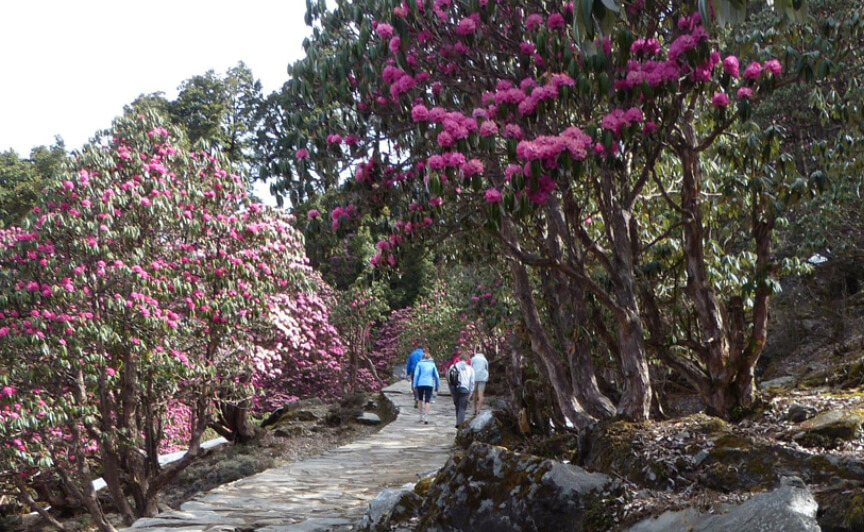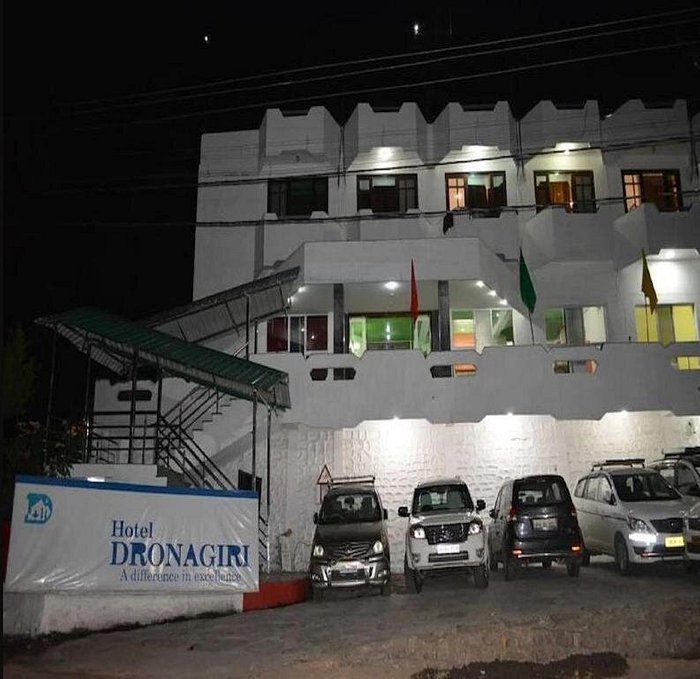Nestled in the heart of the Himalayas, the Singba Rhododendron Sanctuary offers a trek like no other. It’s a paradise for nature lovers and adventure seekers alike.
The sanctuary is known for its vibrant rhododendron forests, which paint the landscape with brilliant colors. Trekking through these trails, you’ll witness breathtaking views and diverse flora. This trek is perfect for those who seek serenity and want to connect with nature.
From the lush greenery to the charming local culture, every step here tells a story. Embarking on the Singba Rhododendron Sanctuary Trek is more than just a hike; it’s an immersive experience into the wild beauty of the Himalayas. Get ready to discover why this trek is a must for adventurers.

Credit: namohtours.com
Introduction To Singba Rhododendron Sanctuary
Imagine trekking through a sanctuary where nature’s brilliance unfolds at every step. Welcome to Singba Rhododendron Sanctuary, a mesmerizing haven nestled in the heart of Sikkim. This sanctuary is not just an ordinary trekking destination; it’s a botanical wonderland that promises to enchant and inspire you.
Location And Accessibility
Singba Rhododendron Sanctuary is located in the Yumthang Valley of North Sikkim, India. This sanctuary is renowned for its vibrant rhododendron blooms that paint the landscape in hues of red, pink, and purple.
Getting to this sanctuary is an adventure in itself. From the bustling town of Gangtok, you can embark on a scenic drive to Lachung, a picturesque village that serves as a gateway to the sanctuary. The journey takes approximately 6-7 hours, traversing winding roads and offering breathtaking views of the Himalayas.
Once in Lachung, the trek to the sanctuary begins. The trail is relatively easy, making it accessible even for novice trekkers. You will find yourself surrounded by nature’s magnificence, with each step bringing you closer to the sanctuary’s floral paradise.
Unique Flora And Fauna
Singba Rhododendron Sanctuary is a botanical treasure trove. The sanctuary boasts over 40 species of rhododendrons, making it a hotspot for plant enthusiasts and nature lovers. During the blooming season, the sanctuary transforms into a riot of colors, with rhododendrons carpeting the valley.
But it’s not just the rhododendrons that captivate visitors. The sanctuary is home to a diverse range of flora and fauna. You might spot rare orchids, primulas, and even medicinal plants along the trail. The rich biodiversity extends to wildlife as well, with species like the Himalayan black bear, red panda, and various birds inhabiting the area.
As you trek through the sanctuary, take a moment to appreciate the symbiotic relationship between the flora and fauna. It’s a reminder of how delicate and interconnected our natural world is.
Have you ever wondered what it feels like to be surrounded by nature’s masterpieces? The Singba Rhododendron Sanctuary offers you that experience, allowing you to witness the splendor of the Himalayas in full bloom.
Ready to lace up your hiking boots and embark on this unforgettable journey? The Singba Rhododendron Sanctuary awaits, promising an adventure that will leave you spellbound and yearning for more.
Best Time To Visit
The Singba Rhododendron Sanctuary Trek offers a breathtaking experience through Sikkim’s natural beauty. Timing your visit right can make all the difference. Discover the best times to embark on this unforgettable trek.
Seasonal Highlights
The best time to visit the Singba Rhododendron Sanctuary Trek is from March to May. During these months, the rhododendrons are in full bloom. The vibrant colors paint a picturesque scene. Another good time is from September to November. This period offers clear skies and pleasant weather. The views of the mountains are stunning.
Weather Considerations
March to May brings mild temperatures and blooming flowers. It is perfect for trekking. The days are warm, while nights can be cool. From September to November, the weather is clear and crisp. The monsoon rains have just ended. This leaves the trails fresh and clean. Winter months from December to February can be very cold. Snow can make the trails difficult. This period is less suitable for trekking.
Trek Preparation
Embarking on the Singba Rhododendron Sanctuary Trek is an adventure that promises breathtaking views and a vibrant splash of nature’s colors. However, the key to a memorable and safe trek lies in meticulous preparation. Ensuring you are well-prepared can make the difference between an exhausting ordeal and an exhilarating journey. Let’s delve into the essentials you need to focus on for a successful trek.
Essential Gear
Having the right gear is crucial for your comfort and safety on the Singba Rhododendron Sanctuary Trek. Here’s a list of must-have items:
- Backpack: A sturdy and comfortable backpack with good support is essential. Look for one with multiple compartments to keep your items organized.
- Footwear: Invest in quality trekking boots that are waterproof and provide excellent ankle support. Ensure they are broken in before the trek to avoid blisters.
- Clothing: Layered clothing is key. Pack moisture-wicking base layers, insulating mid-layers, and a waterproof outer layer. Don’t forget a hat and gloves.
- Navigation Tools: Carry a map, compass, and GPS device. Knowing your route is crucial.
- Hydration: A hydration system or water bottles, and a water purification method. Staying hydrated is vital at high altitudes.
- First Aid Kit: Include bandages, antiseptics, pain relievers, and any personal medications.
- Miscellaneous: Headlamp with extra batteries, trekking poles, sunscreen, and insect repellent.
Physical Fitness Tips
Physical fitness is another critical component of preparing for the Singba Rhododendron Sanctuary Trek. Here are some tips to help you get in shape:
- Cardiovascular Training: Engage in activities like running, cycling, or swimming to build your stamina. Aim for at least 30 minutes, five days a week.
- Strength Training: Strengthen your legs, core, and upper body with exercises like squats, lunges, planks, and push-ups. This will help you carry your backpack and maintain balance on uneven terrain.
- Flexibility: Incorporate yoga or stretching routines to improve your flexibility and prevent injuries.
- Hiking Practice: If possible, practice hiking on varied terrains while carrying a loaded backpack. This will help you get accustomed to the physical demands of the trek.
- Acclimatization: Gradually expose yourself to higher altitudes if you can. This helps your body adapt to lower oxygen levels, reducing the risk of altitude sickness.
Are you ready to take on the challenge of the Singba Rhododendron Sanctuary Trek? With the right gear and fitness regimen, you can ensure a safe and unforgettable adventure. What steps will you take today to prepare for your journey?
Trek Route And Duration
The Singba Rhododendron Sanctuary Trek takes around 3-4 days to complete. This trek offers stunning views of rhododendron forests.
The Singba Rhododendron Sanctuary Trek is a mesmerizing experience. The journey takes you through lush forests, vibrant meadows, and charming villages. Understanding the trek route and duration helps in planning your adventure better. Let’s dive into the details of the popular trails and the estimated trekking time.Popular Trails
The trek starts from the Yumthang Valley. This valley is known for its scenic beauty and hot springs. From Yumthang, the trail leads you through dense rhododendron forests. The vibrant blooms are a sight to behold. There are several trails in the sanctuary. The most popular one is the Yumthang to Lachen trail. This route covers a distance of about 10 kilometers. Another favored trail is the Yumthang to Lachung trek. This path is shorter, stretching around 7 kilometers. Both trails offer stunning views and diverse flora.Estimated Trekking Time
The estimated trekking time varies based on the chosen trail. For the Yumthang to Lachen trail, it typically takes 4 to 5 hours. This duration includes short breaks and a steady pace. The Yumthang to Lachung trek is quicker. Trekkers usually complete it within 3 to 4 hours. It’s perfect for those with limited time. Both treks are suitable for beginners and experienced trekkers alike. With these details, you can plan your trek effectively. So, put on your trekking shoes and get ready for an unforgettable adventure in Singba Rhododendron Sanctuary. “`Flora And Fauna
Embarking on the Singba Rhododendron Sanctuary Trek is a journey into a paradise where nature thrives in its purest form. The sanctuary, nestled in the lap of the Himalayas, is renowned for its diverse flora and fauna. As you tread through this haven, you’ll be mesmerized by the rich tapestry of plant and animal life that greets you. Let’s delve into the captivating world of flora and fauna awaiting you on this trek.
Rhododendron Varieties
The sanctuary is a treasure trove for rhododendron enthusiasts. It boasts over 40 species of these vibrant flowering plants. Each variety paints the landscape in hues of red, pink, purple, and white.
Imagine walking amidst clusters of Rhododendron arboreum, with their large, crimson blooms. You might also spot the delicate Rhododendron campanulatum with its bell-shaped flowers. These plants not only add a splash of color but also fill the air with their sweet fragrance.
During my trek, I found myself pausing frequently to admire the Rhododendron niveum, a rare species known for its elegant white blossoms. It’s a sight you won’t want to miss. Have you ever wondered how many shades of pink exist in nature? A trek through this sanctuary might just answer that question for you.
Wildlife Sightings
The sanctuary is not just about plants. It’s a thriving ecosystem home to a variety of wildlife. Keep your eyes peeled for sightings of the elusive red panda. These adorable creatures are often spotted lounging on tree branches.
Bird watchers are in for a treat as well. The sanctuary is a haven for numerous bird species. You might hear the melodious calls of the blood pheasant or catch a glimpse of the majestic Himalayan monal.
On my trek, I was lucky to see a herd of blue sheep grazing peacefully. These agile creatures blend seamlessly into the rocky terrain. Spotting them felt like finding hidden treasure. Have you ever experienced the thrill of spotting wildlife in their natural habitat? It’s an exhilarating experience that stays with you.
As you continue your trek, be mindful of the smaller creatures too. The sanctuary is teeming with colorful butterflies and insects. Each step you take reveals a new marvel of nature.
Exploring the flora and fauna of Singba Rhododendron Sanctuary is not just a trek. It’s an immersive experience where every sight and sound deepens your connection with nature. Are you ready to uncover the secrets of this Himalayan gem?
Camping And Accommodation
Camping and accommodation are crucial aspects of the Singba Rhododendron Sanctuary Trek. This trek offers unique experiences, immersing you in nature’s beauty. Understanding where to camp or stay ensures a smooth and enjoyable journey. Here’s a guide to help you plan.
Campsites Along The Route
The trek features several ideal campsites. Each offers a serene environment and breathtaking views. Set up your tent near the Rhododendron groves. Experience the vibrant colors and fresh mountain air. Another great spot is by the river banks. Enjoy the soothing sound of flowing water as you drift to sleep.
Some trekkers prefer camping near small meadows. These spots provide a flat, grassy area perfect for tents. Waking up surrounded by lush greenery can be an unforgettable experience.
Nearby Lodging Options
If camping isn’t your preference, there are nearby lodges and guesthouses. These offer basic amenities, ensuring a comfortable stay. Many are located in small villages close to the sanctuary. These accommodations provide a warm bed and a hearty meal.
Some lodges offer unique cultural experiences. Engage with local traditions and enjoy home-cooked meals. Staying in these places can enhance your trek by connecting you with local life.
Whether you choose camping or lodging, both options bring you closer to the natural beauty of the Singba Rhododendron Sanctuary Trek.
Cultural Experiences
The Singba Rhododendron Sanctuary Trek offers more than just scenic beauty. It provides rich cultural experiences. Immerse yourself in the traditions and lifestyles of the local people. Discover unique customs and age-old practices.
Local Communities
Meet the warm-hearted locals of Sikkim. They welcome trekkers with open arms. Learn about their daily lives and routines. Observe their traditional attire, often vibrant and colorful. Participate in local festivals if your visit aligns. These celebrations are full of music, dance, and joy.
Traditional Food And Crafts
Experience the local cuisine, a treat for your taste buds. Try dishes like Gundruk, Phagshapa, and Churpi. Each dish tells a story, filled with local flavors. Visit small markets to find handmade crafts. These crafts include woolen products and bamboo items. Take home a souvenir as a memory of your trek.

Credit: excursiontohimalaya.com
Tips For A Sustainable Trek
Enjoy the beauty of the Singba Rhododendron Sanctuary Trek while being eco-friendly. Carry reusable items and stay on marked trails. Respect wildlife and avoid single-use plastics.
Trekking through Singba Rhododendron Sanctuary is a breathtaking experience, but it’s crucial to do it sustainably. By being mindful of our impact, we can ensure that this beautiful sanctuary remains pristine for future generations. Here are some practical tips to help you trek responsibly.Leave No Trace Principles
Following the Leave No Trace principles is fundamental to sustainable trekking. These principles guide you in reducing your environmental footprint. – Plan Ahead and Prepare: Research the trail, understand the rules, and be ready for changing weather conditions. A well-prepared trekker is less likely to cause unintentional harm. – Travel and Camp on Durable Surfaces: Stick to established trails and campsites to minimize soil erosion and protect local vegetation. – Dispose of Waste Properly: Pack out all trash, leftover food, and litter. Use biodegradable soap away from water sources. – Leave What You Find: Don’t pick flowers or remove natural objects. The beauty of nature lies in its untouched state. – Minimize Campfire Impact: Use a camp stove for cooking instead of building fires. If you must build a fire, keep it small and use established fire rings. Imagine the sanctuary without its lush green foliage because of careless trekkers. Every small action counts. Are you ready to tread lightly?Supporting Local Economy
Supporting the local economy is another important aspect of sustainable trekking. Here’s how you can make a positive impact: – Hire Local Guides and Porters: They know the terrain well and can provide valuable insights about the region. Plus, your support helps them earn a living. – Stay in Local Accommodations: Choose homestays or locally owned lodges over big chain hotels. This way, your money goes directly to the community. – Buy Local Products: Purchase souvenirs from local artisans and eat at local restaurants. This not only boosts the economy but also gives you an authentic experience. – Respect Local Culture: Learn a few phrases in the local language and understand cultural norms. This shows respect and fosters goodwill. On my last trek, I stayed with a local family who shared fascinating stories about the sanctuary. It made my trip memorable and I knew my stay helped them directly. Have you ever thought about how your spending choices can make a difference? Every dollar you spend locally supports families and preserves cultural heritage. By following these tips, you can enjoy the Singba Rhododendron Sanctuary trek responsibly while making a positive impact. Are you ready to embark on your sustainable adventure?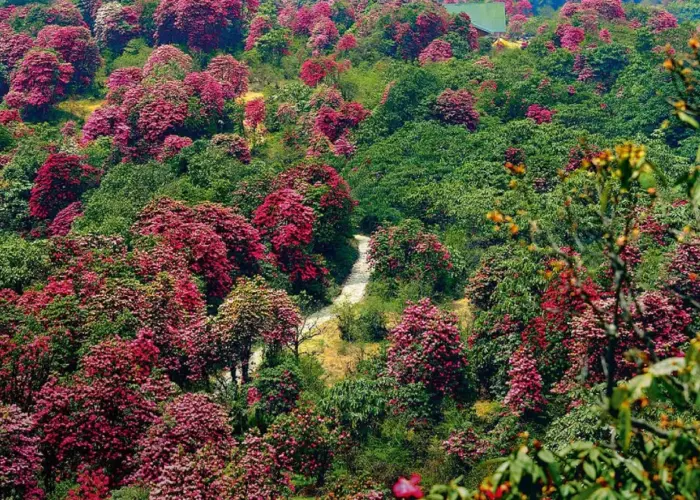
Credit: excursiontohimalaya.com
Frequently Asked Questions
How Long Is The Rhododendron Trek?
The rhododendron trek typically lasts between 5 to 7 days. This duration can vary based on the specific route taken.
What Is The Best Time To Visit Yumthang Valley?
The best time to visit Yumthang Valley is from late February to mid-June. During spring, the valley blooms with vibrant rhododendrons.
What Is Barsey Rhododendron Sanctuary Famous For?
Barsey Rhododendron Sanctuary is famous for its vibrant rhododendron flowers. It offers stunning views of Kanchenjunga and rich biodiversity.
What Is Special About Yumthang Valley?
Yumthang Valley, also known as the “Valley of Flowers,” boasts stunning alpine meadows, hot springs, and a river. It’s home to rare flora and offers breathtaking views of snow-capped peaks. This scenic valley in Sikkim, India, attracts nature lovers and adventure enthusiasts alike.
Conclusion
The Singba Rhododendron Sanctuary Trek offers a unique adventure. Breathtaking views await trekkers. Each step reveals nature’s beauty. Perfect for those seeking tranquility. The sanctuary’s flora is stunning. A memorable experience for nature lovers. Don’t miss this hidden gem. Plan your trek soon.
Embrace the serenity. Discover the magic of Singba Rhododendron Sanctuary.
{ “@context”: “https://schema.org”, “@type”: “FAQPage”, “mainEntity”: [ { “@type”: “Question”, “name”: “How long is the rhododendron trek?”, “acceptedAnswer”: { “@type”: “Answer”, “text”: “The rhododendron trek typically lasts between 5 to 7 days. This duration can vary based on the specific route taken.” } } , { “@type”: “Question”, “name”: “What is the best time to visit Yumthang Valley?”, “acceptedAnswer”: { “@type”: “Answer”, “text”: “The best time to visit Yumthang Valley is from late February to mid-June. During spring, the valley blooms with vibrant rhododendrons.” } } , { “@type”: “Question”, “name”: “What is Barsey rhododendron sanctuary famous for?”, “acceptedAnswer”: { “@type”: “Answer”, “text”: “Barsey Rhododendron Sanctuary is famous for its vibrant rhododendron flowers. It offers stunning views of Kanchenjunga and rich biodiversity.” } } , { “@type”: “Question”, “name”: “What is special about Yumthang Valley?”, “acceptedAnswer”: { “@type”: “Answer”, “text”: “Yumthang Valley, also known as the \”Valley of Flowers,\” boasts stunning alpine meadows, hot springs, and a river. It’s home to rare flora and offers breathtaking views of snow-capped peaks. This scenic valley in Sikkim, India, attracts nature lovers and adventure enthusiasts alike.” } } ] }
